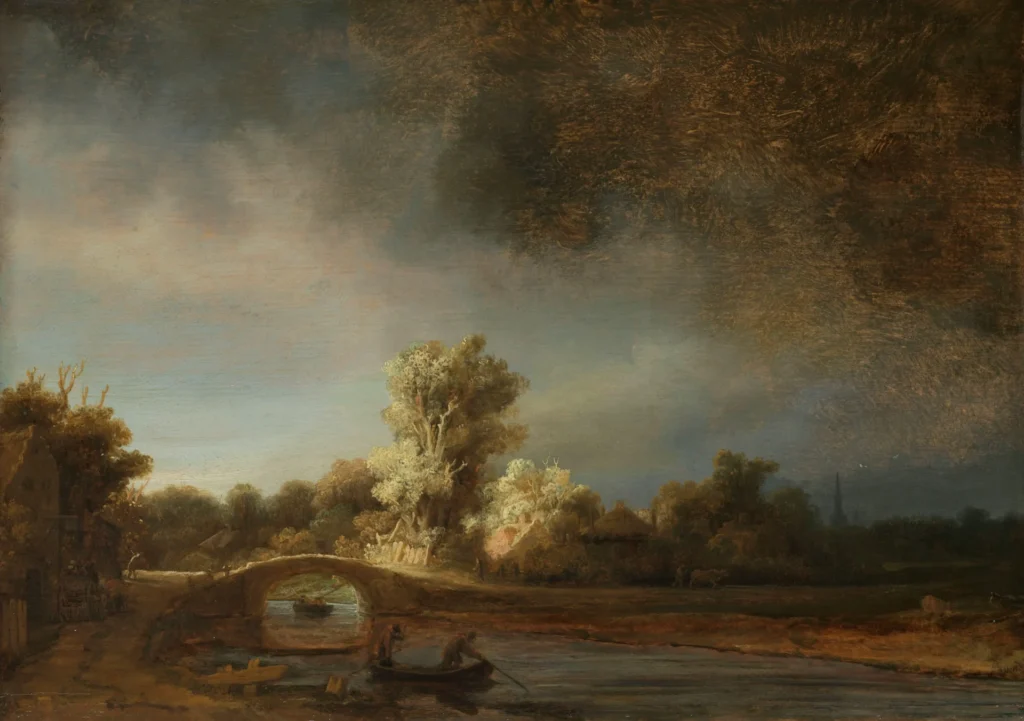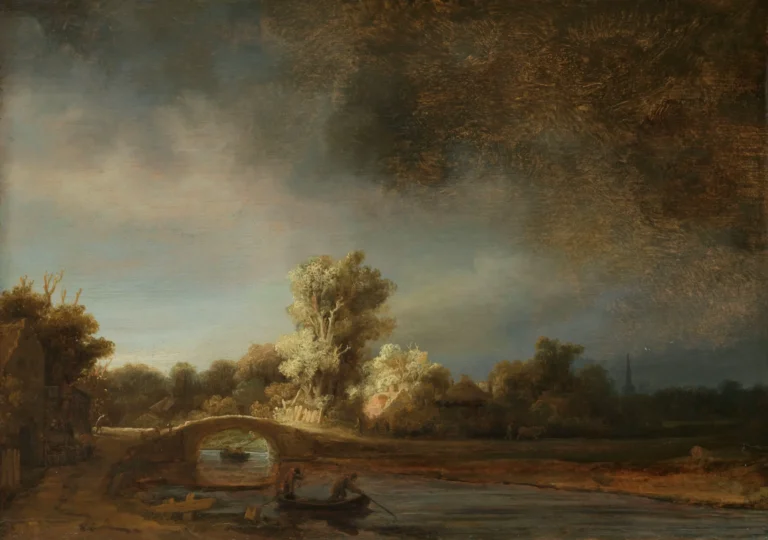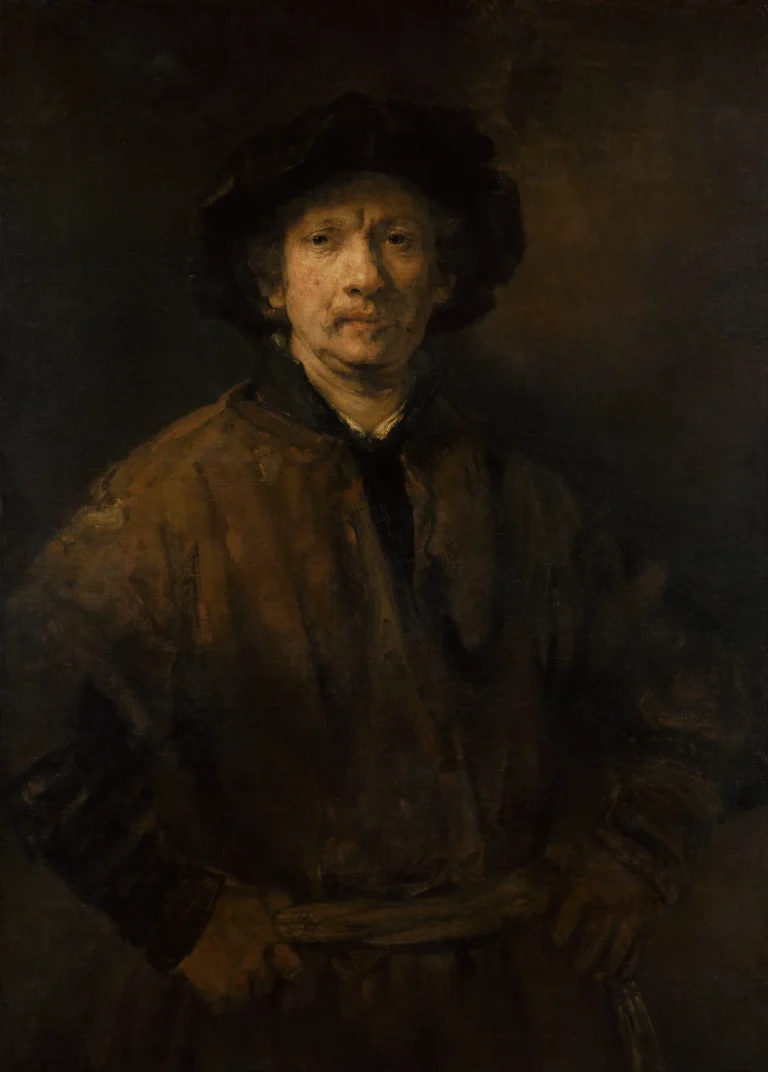Landscape with a Stone Bridge
Rembrandt's Landscape with a Stone Bridge is an enchanting work painted in 1637 that captures a serene moment with a stone bridge traversing a canal. Measuring 29.5 cm by 42.5 cm, this oil painting on oak is infused with symbolic depth, where the bridge serves as a metaphor for Christ and choices in life. Set against a backdrop of pastoral charm, the composition, marked by warm tones and exquisite light, creates a mesmerizing atmosphere that invites viewers to ponder deeper meanings beyond the natural landscape. Currently housed at the Rijksmuseum, this piece signifies an essential period in the Dutch Golden Age.
Year 1637
About the Artwork
Created in 1637 during the Dutch Golden Age, Landscape with a Stone Bridge showcases Rembrandt van Rijn's exceptional skill in landscape painting. Contrary to typical depictions of idyllic scenery, this artwork invites viewers into a narrative ecosystem, where every detail—from the rustic wagon to the figures engaging in daily life—tells a story. The painting combines beauty with spiritual symbolism; the stone bridge represents a journey in life aligned with Christian virtues, while the tavern illustrates wrong choices. The developing chiaroscuro and sunlight illuminating the landscape reflect Rembrandt's innovative use of light and shadow, creating a striking balance that draws the viewer's eye to significant details. The artwork's rich history of ownership adds to its allure, highlighting its movement through the centuries before arriving at the Rijksmuseum in Amsterdam.
Did You Know
The painting’s stone bridge is more than a physical structure; it symbolizes Christ as the guiding path for humanity, highlighting the spiritual journey one takes through life, affirming the importance of choices.
Over the years, Landscape with a Stone Bridge has changed hands among several distinguished owners, including the 3rd, 4th, and 5th Marquesses of Lansdowne, reflecting its high value and historical significance.
Rembrandt’s innovative use of light, shadow, and composition not only redefined landscape painting in his era but also paved the way for future artists to explore dramatic dynamics in their works.










